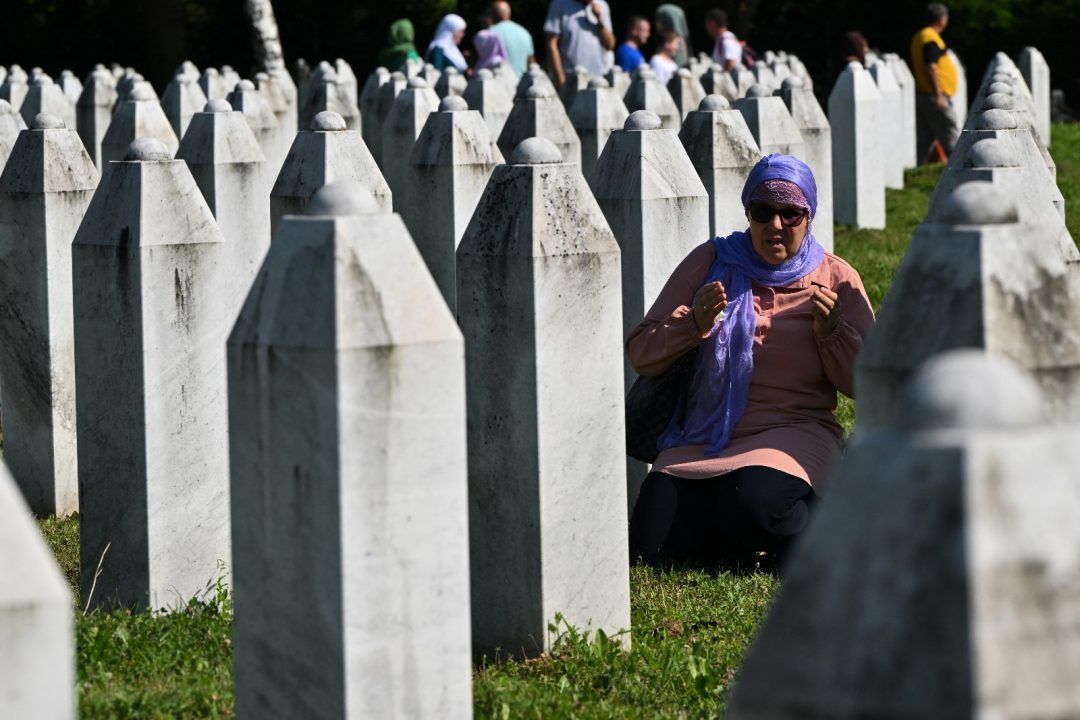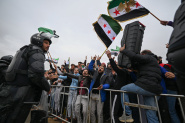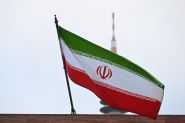- Home
- Arab World
- Bosnian Mourners Gather to Commemorate Srebrenica Genocide

©ELVIS BARUKCIC / AFP
Solemn mourners began gathering in Srebrenica on Thursday to remember the 1995 massacre of Bosnian Muslims, less than two months after the UN established a memorial day to mark the genocide.
On July 11, 1995, Bosnian Serb forces captured the eastern Bosnian town -- which was then a UN-protected enclave -- and killed 8,000 Muslim men and boys in the following days.
It was the worst massacre in Europe since World War II and has been ruled a genocide by two international courts.
In May, the United Nations General Assembly adopted a resolution declaring July 11 the "International Day of Reflection and Commemoration of the 1995 Genocide in Srebrenica".
The resolution was fiercely opposed by Serbia and Bosnian Serbs, who continue to play down the crime.
Bosnian Serb leader Milorad Dodik has repeatedly denied a genocide occurred and says his administration would not recognize the resolution.
A UN court sentenced Bosnian Serb wartime political leader Radovan Karadzic and his army chief Ratko Mladic to life in prison for war crimes including the Srebrenica genocide.
Bosnia's 1992-1995 war between its Croats, Muslims, and Serbs claimed approximately 100,000 lives.
Nearly three decades after the war ended, the Balkan nation remains deeply divided along ethnic lines.
On Thursday, the remains of 14 more victims of the bloodshed, including a 17-year-old boy, will be buried at a memorial cemetery in Potocari, just outside Srebrenica.
Beriz Mujic, whose remains were found in the Srebrenica region last year, will be laid to rest next to his brother Hazim.
So far, the remains, often incomplete, of 6,988 Srebrenica victims have been buried, the overwhelming majority of them under white tombstones in Potocari.
The remains were found in 87 mass graves, and a spokeswoman for Bosnia's Institute for Missing Persons told AFP that they are still looking for around 1,000 people.
To cover up the crime, Bosnian Serb forces moved the bodies of the victims to so-called secondary mass graves.
The annual commemoration ceremonies started on Monday with a 100-kilometer (62-mile) march towards Srebrenica.
Several thousand people joined the march from the village of Nezuk, where the first survivors arrived days after the massacre.
Rusmir Smajilhodzic with AFP
On July 11, 1995, Bosnian Serb forces captured the eastern Bosnian town -- which was then a UN-protected enclave -- and killed 8,000 Muslim men and boys in the following days.
It was the worst massacre in Europe since World War II and has been ruled a genocide by two international courts.
In May, the United Nations General Assembly adopted a resolution declaring July 11 the "International Day of Reflection and Commemoration of the 1995 Genocide in Srebrenica".
The resolution was fiercely opposed by Serbia and Bosnian Serbs, who continue to play down the crime.
Bosnian Serb leader Milorad Dodik has repeatedly denied a genocide occurred and says his administration would not recognize the resolution.
A UN court sentenced Bosnian Serb wartime political leader Radovan Karadzic and his army chief Ratko Mladic to life in prison for war crimes including the Srebrenica genocide.
Bosnia's 1992-1995 war between its Croats, Muslims, and Serbs claimed approximately 100,000 lives.
Nearly three decades after the war ended, the Balkan nation remains deeply divided along ethnic lines.
New burial
On Thursday, the remains of 14 more victims of the bloodshed, including a 17-year-old boy, will be buried at a memorial cemetery in Potocari, just outside Srebrenica.
Beriz Mujic, whose remains were found in the Srebrenica region last year, will be laid to rest next to his brother Hazim.
So far, the remains, often incomplete, of 6,988 Srebrenica victims have been buried, the overwhelming majority of them under white tombstones in Potocari.
The remains were found in 87 mass graves, and a spokeswoman for Bosnia's Institute for Missing Persons told AFP that they are still looking for around 1,000 people.
To cover up the crime, Bosnian Serb forces moved the bodies of the victims to so-called secondary mass graves.
The annual commemoration ceremonies started on Monday with a 100-kilometer (62-mile) march towards Srebrenica.
Several thousand people joined the march from the village of Nezuk, where the first survivors arrived days after the massacre.
Rusmir Smajilhodzic with AFP
Read more




Comments